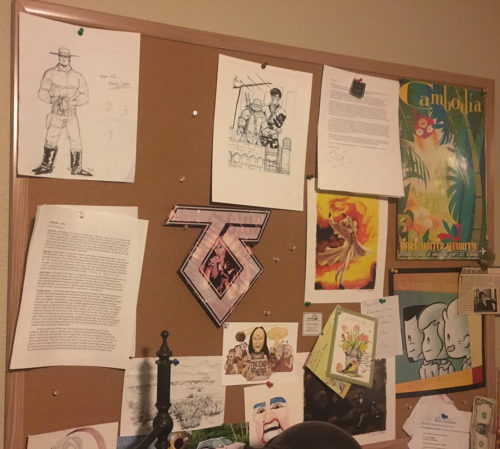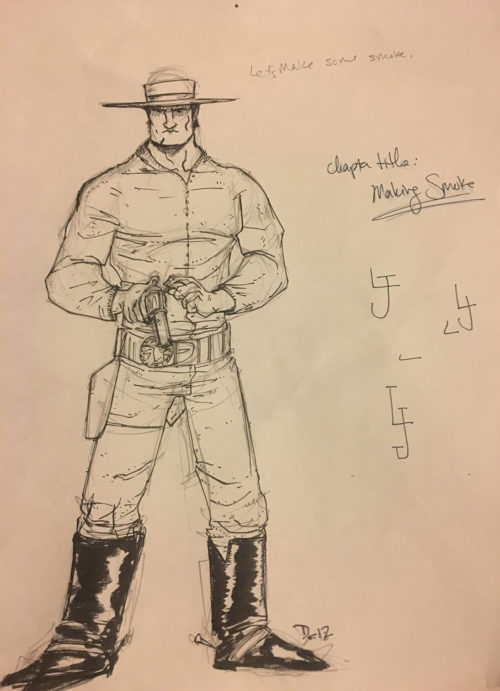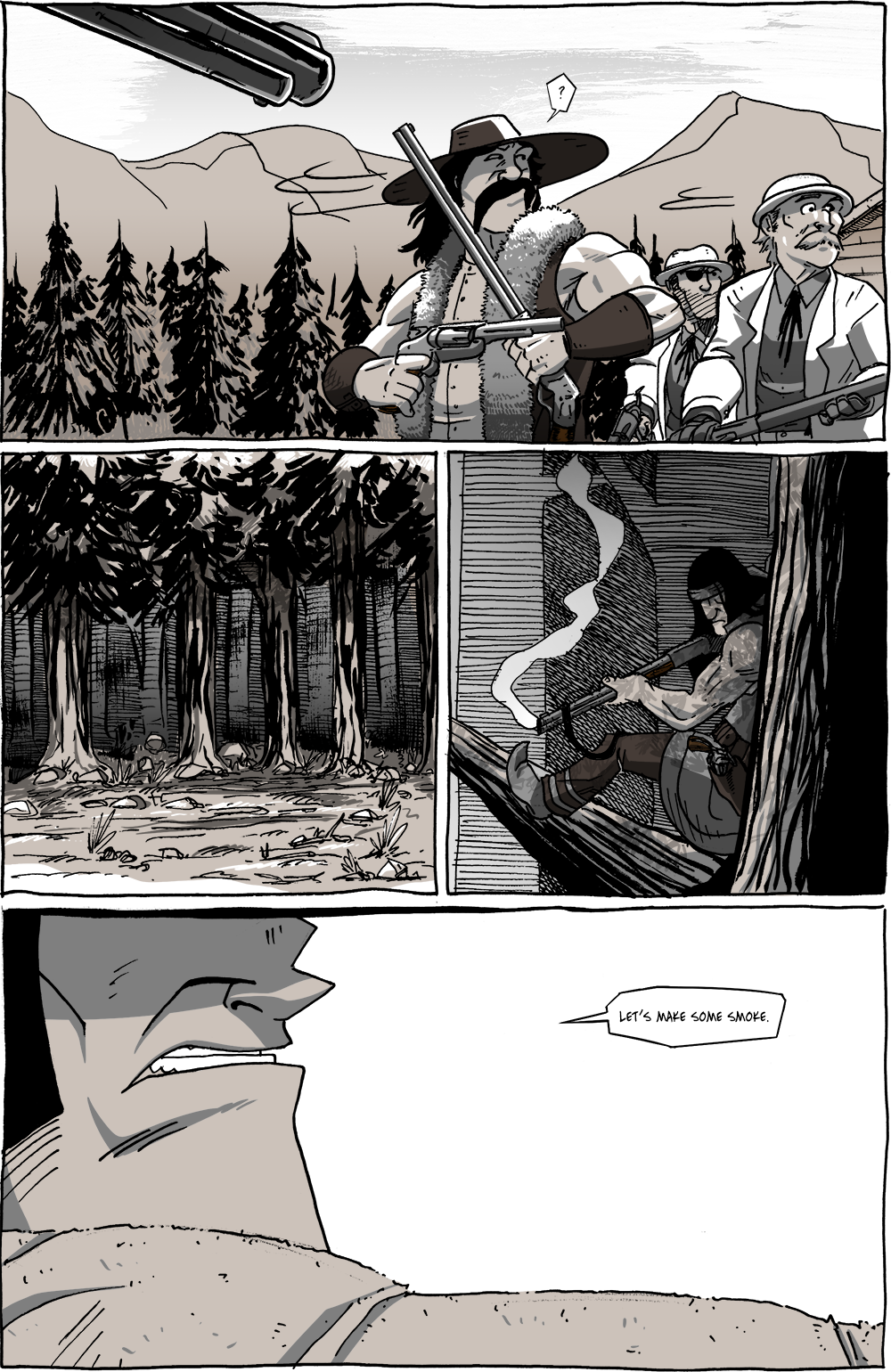All Corners Covered
In 2012, as I was developing Long John beyond just a kernel of an idea into what could be a full-fledged story, I drew the first “modern” Long John. I had been tinkering with aspects of his design for months, fleshing out his story, but I figured I needed to get onto paper the official design at that point.
I push-pinned that drawing to a large cork board in my office, surrounded by other early essential pieces that act as the root system from which everything else grew.

The large cork board in my office, meant to house important things as well as inspiring things. Note the Long John drawing in the upper left corner. During the creation of Chapter 3, this was littered with doodles, lists, and notes.
Maybe it’s not surprising as a guy that went into academics, but my design drawings are rarely isolated unto themselves. I’m always taking notes, surrounding the visual guide with prose that serves the same purpose: to guide further iterations and to keep everything consistent. Most notes are directly related to the drawing, though sometimes off-handed notes dot the page.
One of the off-handed notes on that original design document for Long John reads simply, “chapter title: Making Smoke.”
I don’t remember specifics, but I can admit that the term is not my own. Early on in my fascination with this period in history, I became even more fascinated by this time’s weaponry, single-action revolvers in particular.
I am not a “gun guy” by any means. I won’t get into my thoughts on firearms, but prior to my fascination with early Colts, Remingtons, and Smith & Wessons, I carried literally no interest in this type of weaponry. Prior to this, my main historical focus had been ancient Japan, its samurai/bushido culture, and the cutting-edge (ha!) weaponry of its time, katana and other edged weapons. I loved the integration of warrior and philosopher, how this warrior class was not all about displays of violence but also ruminated on that violence and understanding its effects.

The first official design of Long John from 2012. Obviously, some changes occurred between then and the 2014 debut.
I found a similar simplicity in the weaponry of the old west. The single-action revolver is distinguished from more modern iterations––also called double-action revolvers––in that you have to pull back the hammer of the revolver before firing every shot. By the end of the 19th century, the double-action of having the hammer cock with the trigger-pull had basically become standardized, and the measured use of each cylinder of the revolver was less important than it was when you had to decide to set up each shot.
In learning about––and obsessing over––this technology, I eventually found the glory of YouTube and searched for people using and maintaining these old weapons (or replicas thereof).
The phrase “Making Smoke” came from one YouTuber––I don’t remember whom, sorry––who put his old black powder, cap and ball revolvers to the test: breaking them down, building them up, loading them, and firing them at metal targets at a range. The host said this phrase before taking aim at a target and it hit me profoundly, so I wrote it down as soon as I heard it.
In essence, hearing that phrase created its own cloud around me––these two words established a mantra, a tone, and a goal for me in a single breath. It’s nice, six years later, to actually get to exhale and, with hope, blow that smoke away.



Discussion ¬